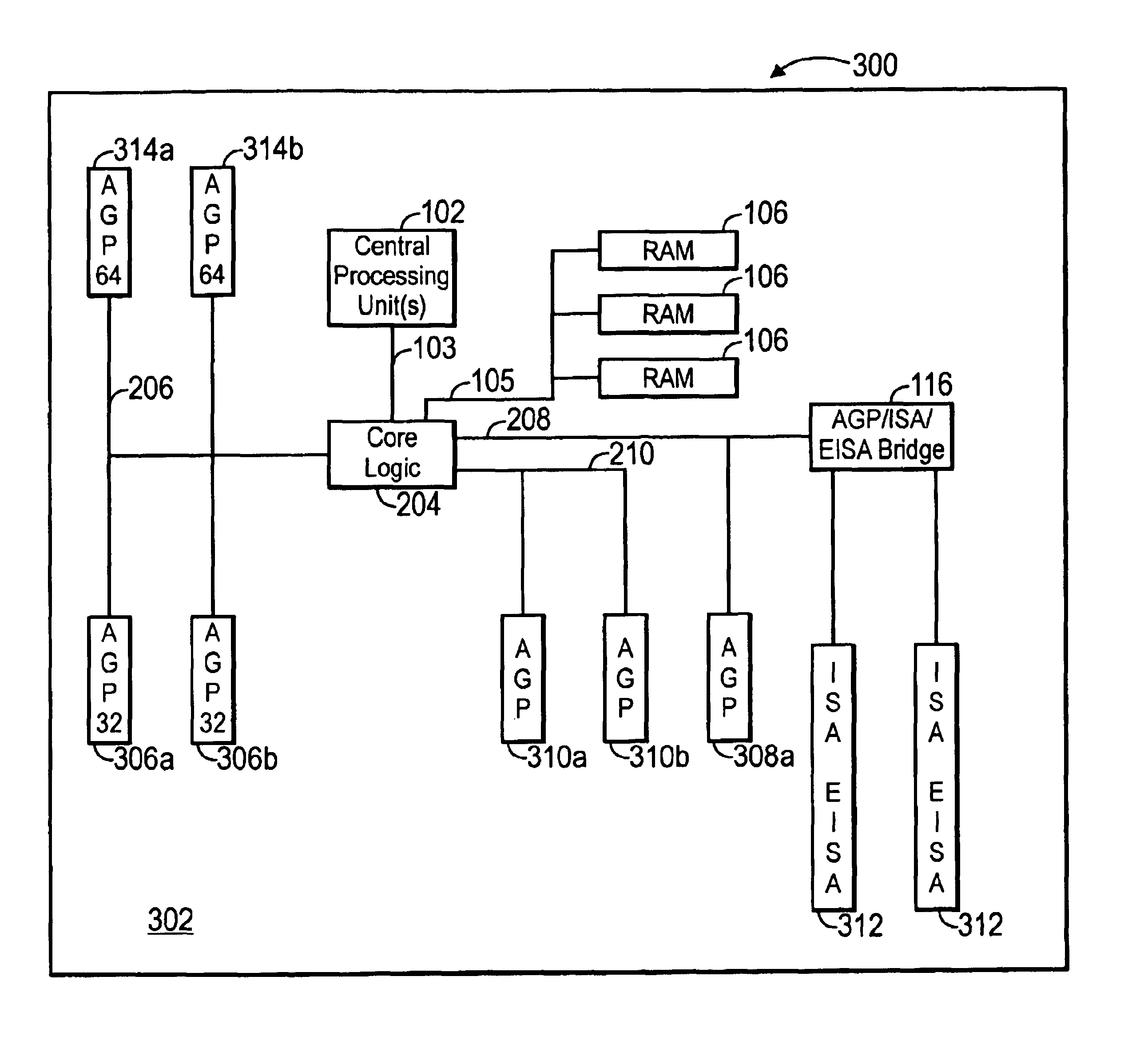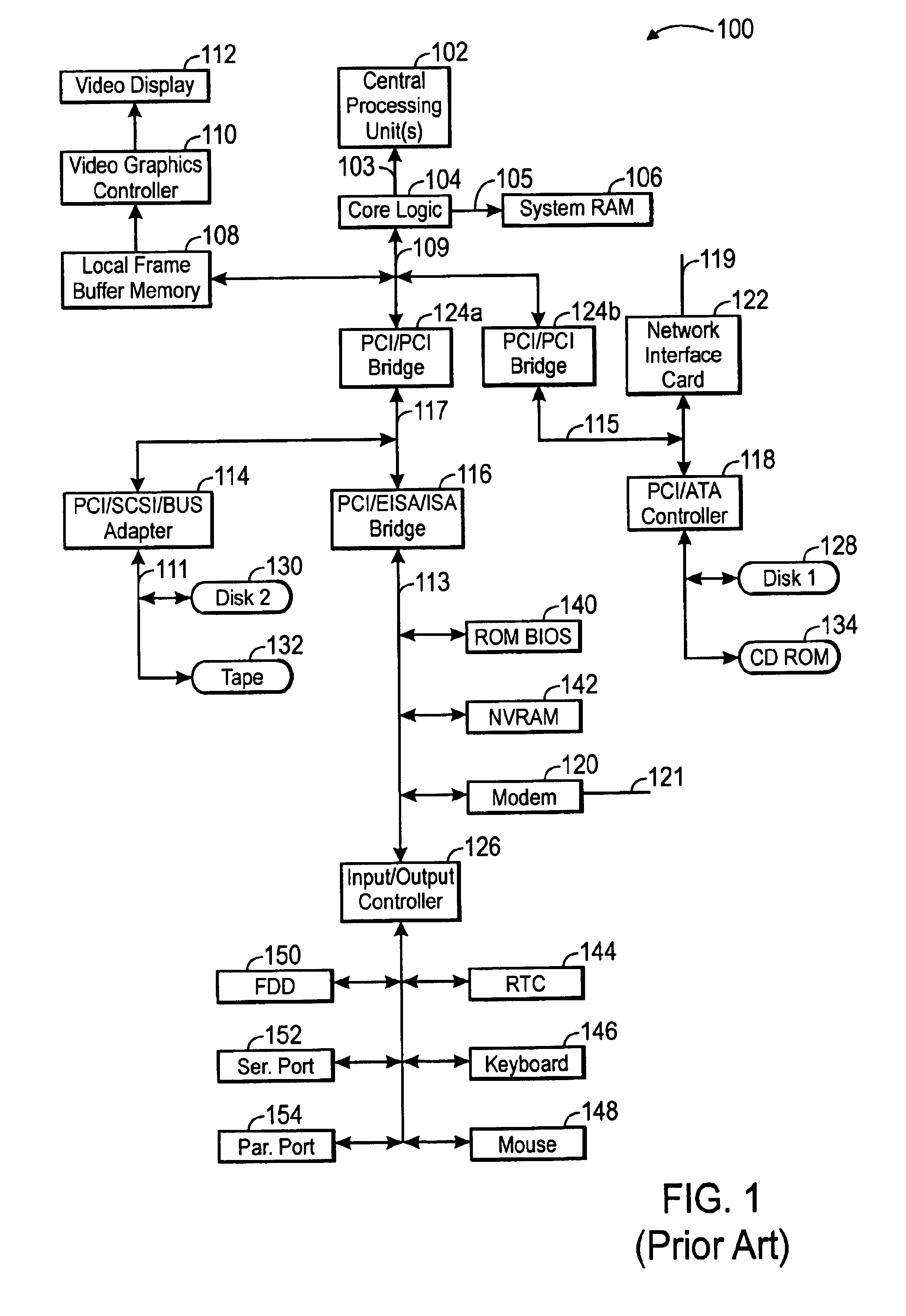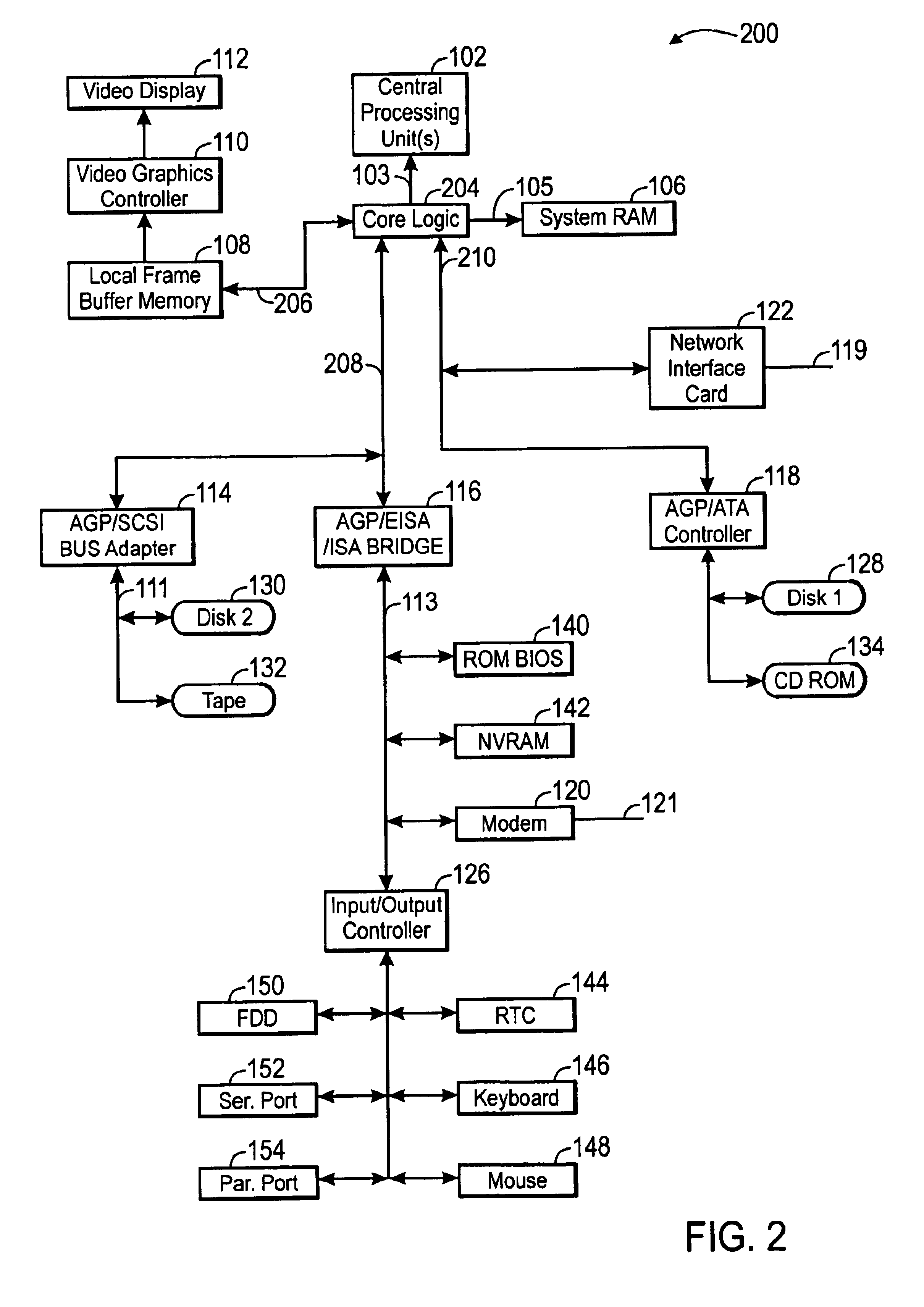Computer CPU and memory to accelerated graphics port bridge having a plurality of physical buses with a single logical bus number
a technology of agp bus and agp port bridge, which is applied in the direction of memory address/allocation/relocation, instruments, computing, etc., can solve the problems of software operating system not being able to configure, the original configuration information stored in the nvram will not be correct for those pci cards now, and the complexity of 3-d graphics requires higher speed access to ever larger amounts of graphics data stored in memory. , to achieve the effect of avoiding multiple delays,
- Summary
- Abstract
- Description
- Claims
- Application Information
AI Technical Summary
Benefits of technology
Problems solved by technology
Method used
Image
Examples
Embodiment Construction
[0079]The following patents are hereby incorporated by reference:
[0080]U.S. Pat. No. 6,175,889, filed Oct. 21, 1998, entitled “Apparatus, Method and System for a Computer CPU and Memory to High Speed Peripheral Interconnect Bridge Having a Plurality of Physical Buses with a Single Logical Bus Number” by Sompong P. Olarig;
[0081]U.S. Pat. No. 5,878,237, filed Jul. 11, 1997, entitled “Apparatus, Method and System for a Computer CPU and Memory to PCI Bridge Having a Plurality of Physical PCI Buses” by Sompong P. Olarig.
[0082]One or more specific embodiments of the present invention will be described below. In an effort to provide a concise description of these embodiments, not all features of an actual implementation are described in the specification. It should be appreciated that in the development of any such actual implementation, as in any engineering or design project, numerous implementation-specific decisions must be made to achieve the developers' specific goals, such as compli...
PUM
 Login to View More
Login to View More Abstract
Description
Claims
Application Information
 Login to View More
Login to View More - R&D
- Intellectual Property
- Life Sciences
- Materials
- Tech Scout
- Unparalleled Data Quality
- Higher Quality Content
- 60% Fewer Hallucinations
Browse by: Latest US Patents, China's latest patents, Technical Efficacy Thesaurus, Application Domain, Technology Topic, Popular Technical Reports.
© 2025 PatSnap. All rights reserved.Legal|Privacy policy|Modern Slavery Act Transparency Statement|Sitemap|About US| Contact US: help@patsnap.com



